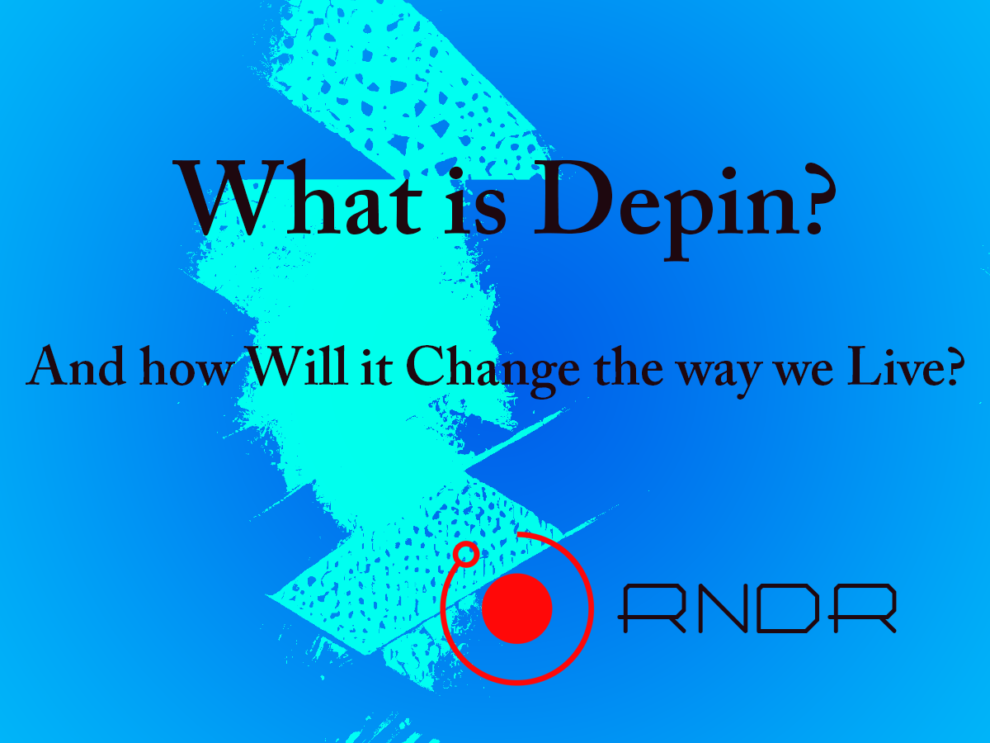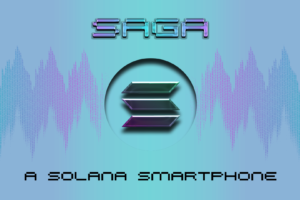What is DePIN? Your Comprehensive Guide to Decentralized Infrastructure in Blockchain
In the ever-evolving landscape of blockchain technology, decentralized infrastructure stands out as a groundbreaking approach that reshapes how data storage and computational power are distributed1. Decentralized Physical Infrastructure Networks, or DePIN, mark a notable advancement in this domain by promoting a collaborative effort among individuals and enterprises worldwide to develop decentralized physical infrastructures3. This innovative concept not only challenges traditional centralized systems but also opens up a plethora of opportunities for depin crypto projects. By leveraging networks like Ethereum and utilizing services such as AWS Blockchain Services, DePIN aims to revolutionize the way decentralized applications (DApps) are built, offering scalability and efficiency1.
In this article, we delve into the intricacies of DePIN, uncovering its functionality, key use cases, advantages over traditional systems, and the challenges it faces alongside the future prospects of depin crypto projects. As the blockchain ecosystem continues to grow, understanding the role and potential of decentralized physical infrastructure networks becomes crucial. Through discussing projects like DIN, which aims to ensure uninterrupted access to blockchain data, we will explore how DePIN is setting the stage for a new era in blockchain development2.
What Exactly is DePIN?
Definition and Core Concepts
DePIN stands for Decentralized Physical Infrastructure Networks, which are specialized blockchain protocols designed to build, maintain, and operate physical hardware infrastructure in a decentralized manner 6. These networks utilize blockchain technology and token rewards to develop physical infrastructure across various sectors, including transport, energy, and wireless connectivity 5.
Components and Functionality
Key components of DePINs include smart contracts, the Internet of Things (IoT), and Decentralized Autonomous Organizations (DAOs). These elements enable autonomous, real-time interactions within physical infrastructures, enhancing efficiency and reducing reliance on centralized systems 4. DePINs can be broadly classified into two categories:
- Physical Resource Networks (PRNs): These focus on deploying location-dependent hardware that provides services like energy, connectivity, and geospatial data to specific physical locations 6.
- Digital Resource Networks (DRNs): These create a location-independent back-end for the cloud, offering digital resources such as computing, storage, and bandwidth 6.
Decentralization and Governance
By eliminating centralized entities that can potentially censor or shut down services, DePINs empower end-users and service providers. The decentralized governance is facilitated through DAOs, where ownership of infrastructure tokens translates to voting rights 8. This structure not only democratizes decision-making but also enhances security and trust among participants.
Incentivization and Tokenization
DePIN fosters a collaborative environment by incentivizing participation. Service providers and users are rewarded for contributing resources or staking tokens, which helps in sustaining and expanding the network 8. Additionally, physical infrastructure assets are tokenized and represented as digital tokens on a blockchain, further integrating physical assets with digital capabilities 8.
Distinction from Related Concepts
While DePINs primarily address the physical aspects of decentralized systems, Decentralized Resource Networks (DeRENs) focus on the virtual and resource-based aspects. This distinction is crucial for understanding the comprehensive scope of decentralized infrastructure in blockchain technologies 4.
By leveraging such innovative frameworks, DePINs not only challenge traditional infrastructure models but also pave the way for more resilient, efficient, and user-centric systems. This transformative approach has significant implications for how physical infrastructure will be conceptualized, developed, and managed in the future.
How DePIN Functions
DePINs utilize a blend of modern technologies and decentralized governance to function effectively. The integration of smart contracts and the Internet of Things (IoT) allows for autonomous, real-time interactions within physical infrastructures, enhancing the operational efficiency and responsiveness of systems like renewable energy grids and supply chain operations 4.
Key Elements of DePIN Operations
- Blockchain Technology: At the core of DePINs is blockchain technology, which disperses authority and management across the network rather than centralizing it in a single organization. This structure significantly enhances security, efficiency, and transparency within physical systems 4.
- Tokenization: DePIN platforms may interact with real-world assets by representing these tangible assets as digital tokens on a blockchain. This process allows for decentralized ownership and trading, which is crucial for the seamless integration of physical and digital assets 4.
- Cryptocurrency Incentives: To encourage participation and investment in physical infrastructure networks, DePINs reward participants with cryptocurrency. This incentive mechanism enables the infrastructure to be built from the ground up, fostering a more collaborative and inclusive development environment 9.
Operational Structure of DePIN
- Off-Chain Network: The off-chain network consists of users and service providers who play a crucial role in the maintenance and operation of the network. This layer is essential for the practical implementation of services and for ensuring user engagement 6.
- Blockchain Layer: Serving as the backbone of the DePIN, the blockchain layer ensures that all transactions are processed correctly and remain transparent. This layer handles payments, escrow contracts, and maintains a public ledger that enhances trust and reliability among all participants 6.
- Protocols: Protocols define the operational rules of a DePIN, ensuring that all network activities align with the overarching goals and standards of the network. These protocols are crucial for maintaining the integrity and functionality of the network 6.
Participants in DePIN Networks
- Token Holders: Individuals who hold infrastructure tokens not only contribute resources but also participate in the governance of the network through voting rights. Their involvement is critical for the decentralized decision-making process 8.
- Infrastructure Operators: These entities manage the day-to-day operations of the physical infrastructure, ensuring that all components function seamlessly and efficiently 8.
- Developers: Responsible for building and maintaining the DePIN protocols, smart contracts, and applications, developers are the backbone of innovation within the network 8.
- Investors: Providing the necessary capital for the development and launch of DePIN projects, investors play a pivotal role in the scalability and sustainability of the network 8.
By leveraging these components and participants, DePINs not only challenge traditional infrastructure models but also pave the way for more resilient, efficient, and user-centric systems.
Key Use Cases of DePIN
Energy Systems and P2P Energy Trading
DePIN technology revolutionizes the energy sector by enabling peer-to-peer (P2P) energy trading. This allows individuals with solar-powered homes to not only produce but also sell excess energy directly to the grid or their neighbors, fostering a decentralized and democratized access to energy resources 4. Projects like Power Ledger exemplify the potential of blockchain in transforming energy distribution 4.
Supply Chain Management
In supply chain management, DePINs ensure unchangeable records of product provenance, which enhances authenticity and transparency from the manufacturing stage to delivery. This application of DePIN technology ensures that all stakeholders can trust the origin and handling of goods throughout the supply chain 4.
Telecommunications and Data Storage
DePINs are set to transform telecommunications by enabling decentralized networks that facilitate data transmission, communication, and internet access 8. In the realm of data storage, projects like Filecoin and Arweave lead the way by providing decentralized storage solutions that allow participants to rent out unused storage space, thereby creating a secure, distributed network for data storage 410.
Decentralized Wireless Networks
Helium and Helium Mobile are pioneering the development of decentralized wireless networks. These networks incentivize individuals to provide coverage and connectivity, thereby expanding internet access and enhancing the capabilities of the Internet of Things (IoT) 410.
Real Estate and Transportation
DePIN technology can expedite property transactions and create decentralized mobility solutions within the real estate and transportation industries. This not only streamlines processes but also opens up new avenues for managing and transacting properties and services 4.
Healthcare Infrastructure
In healthcare, DePIN can transform the infrastructure by enabling secure and transparent data storage and management. This application is crucial for maintaining patient confidentiality while ensuring that medical records are accessible and immutable 8.
Disaster Relief and Humanitarian Aid
DePIN technology plays a vital role in disaster relief and humanitarian aid efforts by creating decentralized networks that can operate independently of damaged infrastructure. This capability is crucial for coordinating aid and managing resources effectively in crisis situations 8.
Decentralized E-commerce and Sharing Economy Platforms
DePIN empowers a new wave of decentralized e-commerce and sharing economy platforms, allowing for peer-to-peer transactions and interactions without the need for central intermediaries. This shift not only reduces costs but also increases efficiency and trust among users 8.
Innovative DePIN Projects
Several innovative DePIN projects are set to reshape various industries. For instance, the NATIX Mobile DePIN App enhances driving experiences by providing real-time traffic alerts and data on road conditions through users’ smartphone sensors. Users can earn rewards for sharing this valuable data, which also helps in training autonomous vehicle models 11. Additionally, Silencio is building a decentralized network to combat noise pollution, showcasing the diverse applications of DePIN technology 11.
By leveraging DePIN, these diverse sectors are not only enhancing their operational efficiencies but are also paving the way for more sustainable and user-centric models.
Advantages of DePIN Over Traditional Systems
Enhanced Transparency and Accountability
DePIN employs decentralized autonomous organizations (DAOs) to manage and govern the infrastructure, which significantly enhances transparency and accountability. This governance model allows users to track decision-making processes and hold operators accountable for their actions 8. By using blockchain technology, DePIN ensures that all transactions and operational decisions are recorded on a transparent ledger, accessible to all participants 12.
Improved Access and Reduced Costs
The decentralized nature of DePIN reduces reliance on centralized systems, which often involve higher operational and maintenance costs. By enabling tokenization of physical assets, DePIN allows for broader participation and ownership, which can lead to reduced costs and improved access to infrastructure services, particularly in underserved regions 8.
Optimized Resource Allocation and Efficiency
Incentive structures within DePIN encourage efficient utilization of resources, leading to a more sustainable and cost-effective infrastructure network. This optimization not only conserves resources but also ensures that they are allocated based on actual demand rather than speculative or inefficient planning 8. The decentralized setup also eliminates redundancies and improves the overall efficiency of systems, from energy distribution to telecommunications 4.
Scalability and Security
DePIN systems are inherently scalable due to their decentralized nature, allowing for incremental growth without the need for significant upfront investments. The security of these networks is enhanced by blockchain’s inherent characteristics, such as immutability and resistance to tampering, which protect against fraud and cyber threats 12.
Community Empowerment and Fair Pricing
By eliminating centralized control, DePIN promotes fair pricing and empowers communities by giving them a stake in the infrastructure they use. This approach not only fosters community-driven growth but also ensures that the benefits of infrastructure development are equitably shared 12.
Resilience and Reduced Single Points of Failure
Traditional centralized systems often suffer from single points of failure, which can lead to widespread disruptions. DePIN eliminates these vulnerabilities by distributing the infrastructure across multiple nodes, thus enhancing the resilience and reliability of the network 4.
Encouragement of Innovation and Sustainable Practices
The open and participatory nature of DePIN fosters innovation by allowing a diverse range of contributors to develop and implement solutions. This environment encourages risk-taking and creativity, which are often stifled in traditional systems. Additionally, the focus on sustainability within DePIN incentivizes the adoption of practices that are environmentally friendly and resource-efficient 4.
Examples of DePIN Projects
Projects like Akash and Filecoin demonstrate the practical benefits of DePIN by offering compute and cloud storage services at prices lower than those of traditional Big Tech companies, showcasing the cost-efficiency and accessibility of decentralized systems 12.
Challenges and the Future of DePIN
Regulatory and Technical Challenges
DePIN projects face a range of regulatory and technical hurdles that can impact their development and widespread adoption. Regulatory uncertainty is a significant barrier, as the frameworks governing tokenized assets and decentralized financial services are still in the formative stages 8. This uncertainty can deter investment and innovation within the DePIN ecosystem.
From a technical standpoint, scaling DePIN solutions to accommodate large-scale infrastructure projects presents considerable challenges. These include ensuring the security, interoperability, and user-friendliness of the platforms, which are crucial for gaining user trust and facilitating widespread adoption 816.
User Adoption and Market Dynamics
Achieving widespread user adoption is critical for the success of DePIN projects. This requires overcoming entrenched behaviors and the existing infrastructure that users are accustomed to. Additionally, DePIN projects must navigate market volatility and the fluctuating demand for tokens, which can pose risks to their stability and long-term viability 814.
Security and Privacy
While blockchain technology offers robust solutions to security and privacy concerns, DePIN projects are not immune to these challenges. Ensuring the security of smart contracts and protecting user data against breaches are ongoing concerns that require constant attention and improvement 13.
Future Outlook and Innovations
Looking ahead, the future of DePIN is poised for significant growth and innovation. The total market capitalization of all DePIN tokens, which exceeded $25 billion as of February, indicates a strong market interest and the potential for further expansion 14. Projects like Solana have become popular choices for DePIN applications due to their high transaction capacity and low cost 14.
Venture capital interest in DePIN projects continues to grow, suggesting that these platforms will play a crucial role in shaping the future of decentralized infrastructure 14. However, for DePIN to realize its full potential, ongoing challenges such as scalability, interoperability, and regulatory compliance must be addressed.
Notable DePIN Projects
Several innovative DePIN projects are set to redefine industry standards. For example, Solana’s high-performance blockchain supports various DePIN applications, offering solutions that are both scalable and cost-effective 14. Additionally, projects like Akash Network provide decentralized cloud services, challenging traditional cloud providers by offering more accessible and less expensive alternatives 12.
These projects exemplify the dynamic nature of DePIN and its capacity to drive significant changes across multiple sectors, including transportation, telecommunications, and energy management 15. As these technologies continue to evolve, they will likely play a pivotal role in the development of sustainable and efficient infrastructure solutions.
References
[1] – https://aws.amazon.com/blockchain/decentralization-in-blockchain/[2] – https://medium.com/simplystaking/introduction-to-the-decentralized-infrastructure-network-din-169d1244db8a
[3] – https://lbank-exchange.medium.com/the-rise-and-challenges-of-depin-a-deep-dive-into-its-prospects-07605e467812
[4] – https://cointelegraph.com/explained/decentralized-physical-infrastructure-network-depin-explained
[5] – https://www.coingecko.com/learn/depin-crypto-decentralized-physical-infrastructure-networks
[6] – https://www.techopedia.com/definition/decentralized-physical-infrastructure-networks-depin
[7] – https://limechain.tech/blog/what-is-depin/
[8] – https://www.linkedin.com/pulse/depin-decentralized-physical-infrastructure-potential-santosh-g-wybbc
[9] – https://decrypt.co/resources/what-is-depin-physical-infrastructure-blockchain
[10] – https://medium.com/ideasoft-io/decentralized-physical-infrastructure-depin-explained-7be42c97eb00
[11] – https://www.natix.network/blog/potential-of-decentralized-physical-infrastructure-networks-depin
[12] – https://medium.com/@coolbitx/exploring-depin-understanding-decentralized-physical-infrastructure-networks-13a909d28be5
[13] – https://www.linkedin.com/pulse/future-depin-predictions-possibilities-heliummart-h4gaf
[14] – https://www.coindesk.com/markets/2024/04/16/depin-is-venture-capitalists-latest-crypto-obsession-can-it-match-the-hype/
[15] – https://www.coinlive.com/news/depin-s-future-opportunities-and-challenges
[16] – https://shardeum.org/blog/depin-decentralized-physical-infrastructure-networks/
For more up to date information on Crypto, click on this link https://www.skintormint.com/category/crypto/













